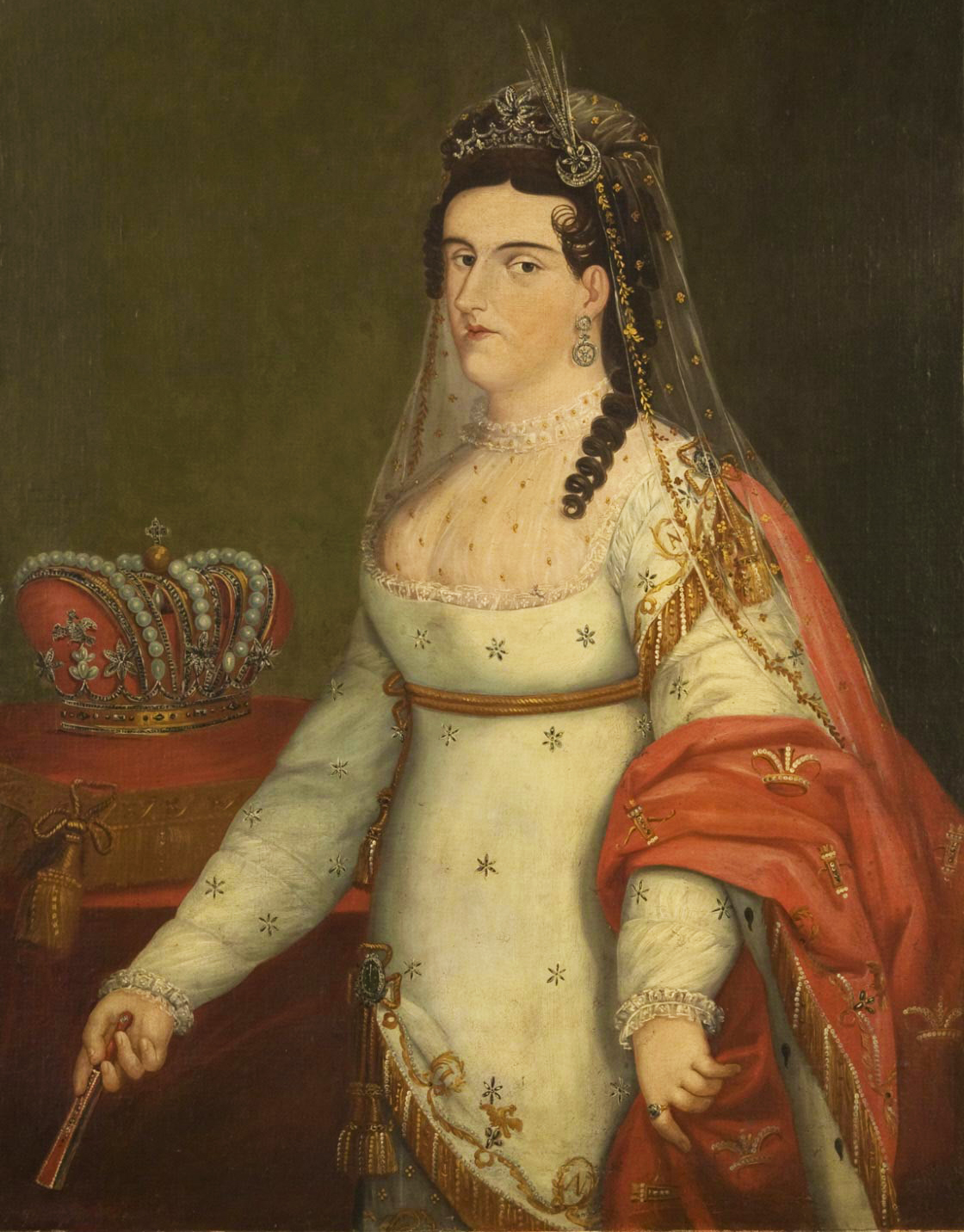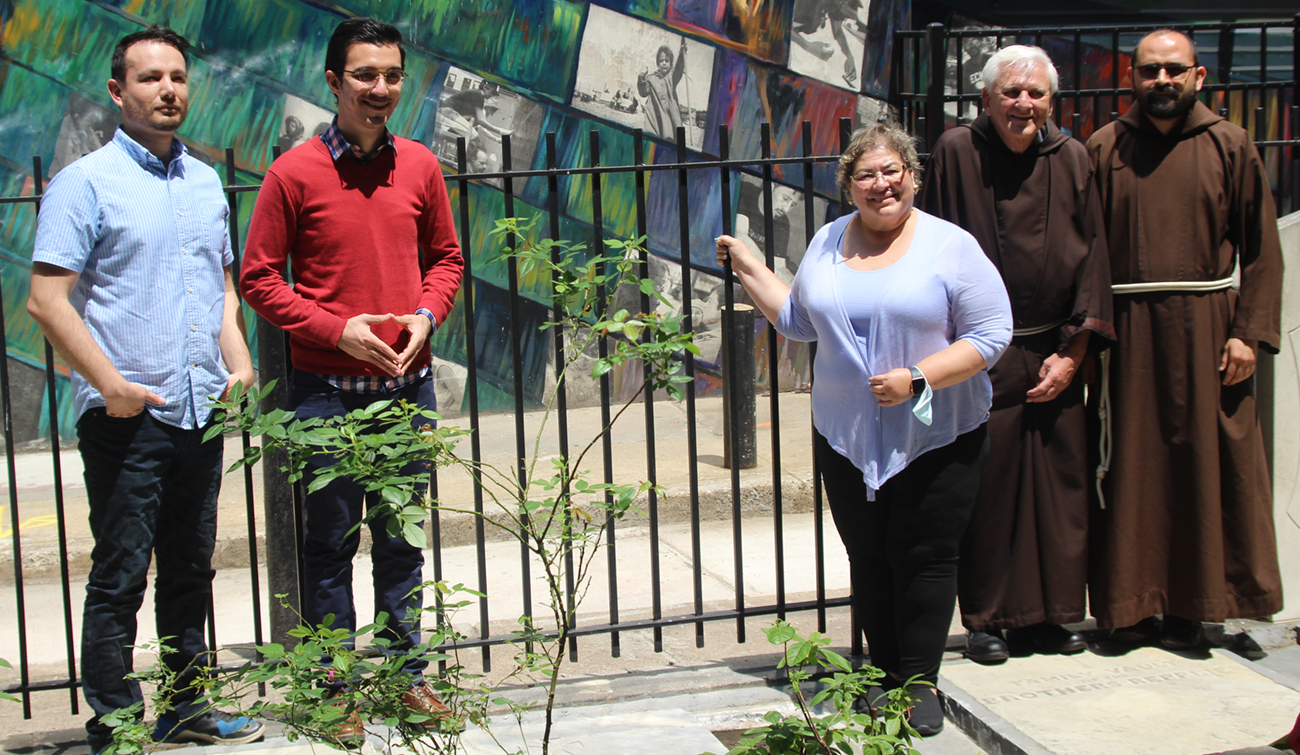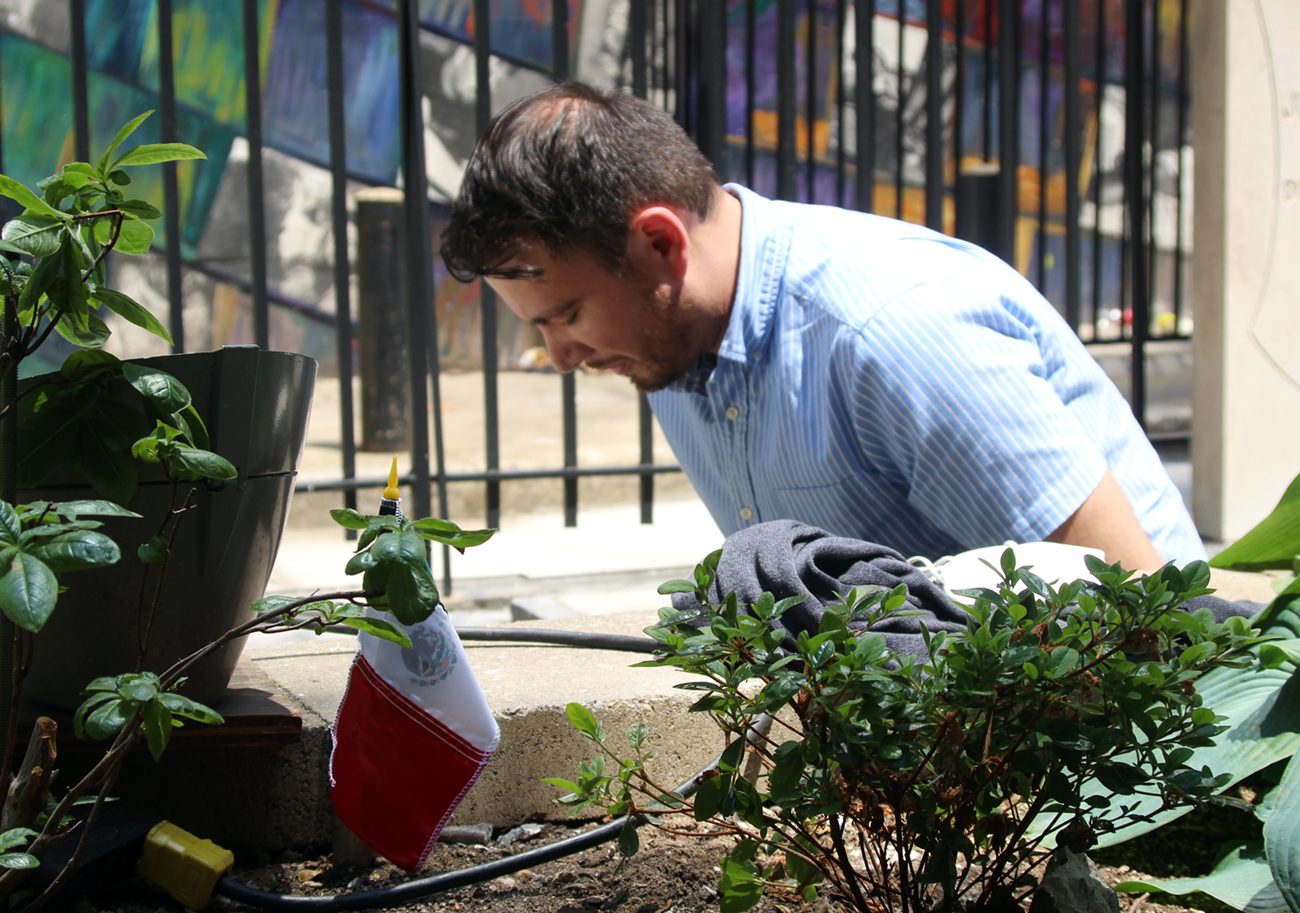As Mexico marks its bicentennial, dignitaries from that country recently visited an archdiocesan parish to honor the graves of their exiled empress and her family.
Leticia López Landero, a former Mexican congresswoman and the current mayor of Córdoba, Veracruz, joined U.S.-Mexican scholar Alberto Alejandre and others in paying respects to Ana María Huarte de Iturbide, who along with several descendants is buried at St. John the Evangelist Parish in downtown Philadelphia.
The monarch’s husband, General Agustín de Iturbide, led Mexican forces in their war for independence from Spain, becoming emperor of the new nation in 1822. After a brief reign and a period of exile in Europe, he was assassinated by political rivals in 1824.
[hotblock]
His wife and children fled to United States, and in the early 1830s, the empress arrived in Philadelphia, where she traded her regal lifestyle for one of quiet devotion as a St. John’s parishioner. Upon her death in 1861, Iturbide was buried in the church’s historic graveyard, along with a number of her children and descendants.
During visits to the site May 25 and 26, the Mexican delegation placed flowers and a small flag of Mexico before the vault, marking an occasion that López Landero described as “something divine.”
With Agustín de Iturbide as a signatory to the 1821 Treaty of Córdoba – through which Spain recognized Mexico’s independence under the Iguala Plan – the tomb of his wife was “a sacred place,” said López Landero.
Speaking in Spanish, the Córdoba mayor said the empress had shown herself as “a woman of faith and fortitude” throughout her long years of widowhood and exile from her native land.
Coming to a country “so distant and unknown” was a testament to her bravery, she said, adding the sight of the empress’ grave – thousands of miles from that of her husband in Mexico City’s Metropolitan Cathedral – was a painful one.

“Empress Ana María Huarte de Iturbide of Mexico” by Josephus Arias Huerta, 1822. (Wikimedia Commons)
“The most important thing in our lives is family,” said López Landero. “The history of Mexico is also the history of a family.”
While some historians dismiss Emperor Agustín as a self-appointed ruler, the Iturbide legacy has suffered “injustice,” said Alejandre – something he and other researchers have been seeking to redress.
“For almost two centuries, many Mexicans have tried revindicate not only the historical truth, but also (that of) the family, who have been so mistreated,” he said.
Iturbide, who went to confession, kissed the crucifix and sent his rosary to his wife prior to his execution, was buried in the habit of a Franciscan tertiary. Ana herself arranged for one of her husband’s betrayers — General Don Antonio Echávarri, himself deported to the U.S. – to receive the sacraments of the church just hours before his death.
“We grew up knowing the real history and caring about it,” said Alejandre. “I feel very moved to be able to contribute to some justice here, because Mexico has notoriously been a country with so much injustice and inequality. A very famous Mexican author says Iturbide, our first emperor, is also the first of our victims as a state.”
Patriotic Mexicans and Mexican-Americans have been “coming to visit (the empress’) grave for 150 years,” said Anne Kirkwood, archivist at St. John the Evangelist.
She admitted the decision to settle in Philadelphia — after migrating northward from New Orleans, Washington, D.C. and Baltimore – remained “one of the enduring questions” about the empress.
[hotblock2]
Despite a lack of specific information about her time in the city, the empress found herself among a number of Latin American neighbors with an array of political perspectives during the Age of Revolution. From the 1780s until the mid-nineteenth century, such “Pan-Americans” significantly shaped the Catholic Church in Philadelphia and in the fledgling nation as a whole, according to historian Richard Warren of St. Joseph’s University.
But the empress herself “lived a very humble life,” said Kirkwood.
With her pension suspended by the Mexican government, the former monarch sold her artworks and jewels to make ends meet, yet nonetheless earned a reputation for her philanthropy.
“She was super generous to all of the Catholic charities, even though she had nothing,” Kirkwood said.
And that largesse may be the most enduring part of the empress’ legacy, said Capuchin Father Rafael Anguiano, a Mexican native in residence at St. John the Evangelist.
“She had a very strong faith, and I think I can learn from that great faith she had when she moved here,” said Father Anguiano, whose hometown of León is three hours from the empress’ birthplace at Morelia.
The delegation’s visit, and the work to reclaim the Iturbide legacy, show that the empress’ story continues to unfold, said López Landero.
“There are no coincidences with God,” she said.

Leticia López Landero (center), a former Mexican congresswoman and the current mayor of Córdoba, Veracruz, joined U.S.-Mexican scholar Alberto Alejandre (far left) and others in paying respects to Mexican empress Ana María Huarte de Iturbide, who along with several descendants is buried at St. John the Evangelist Parish in downtown Philadelphia. Capuchin Fathers John Daya, pastor (second right), and Rafael Anguiano (right) welcomed the delegation May 25 and 26. (Gina Christian)
PREVIOUS: 30 archdiocesan students noted for academic excellence
NEXT: Pro-life rally draws hundreds amid ‘staggering’ abortion statistics




Share this story